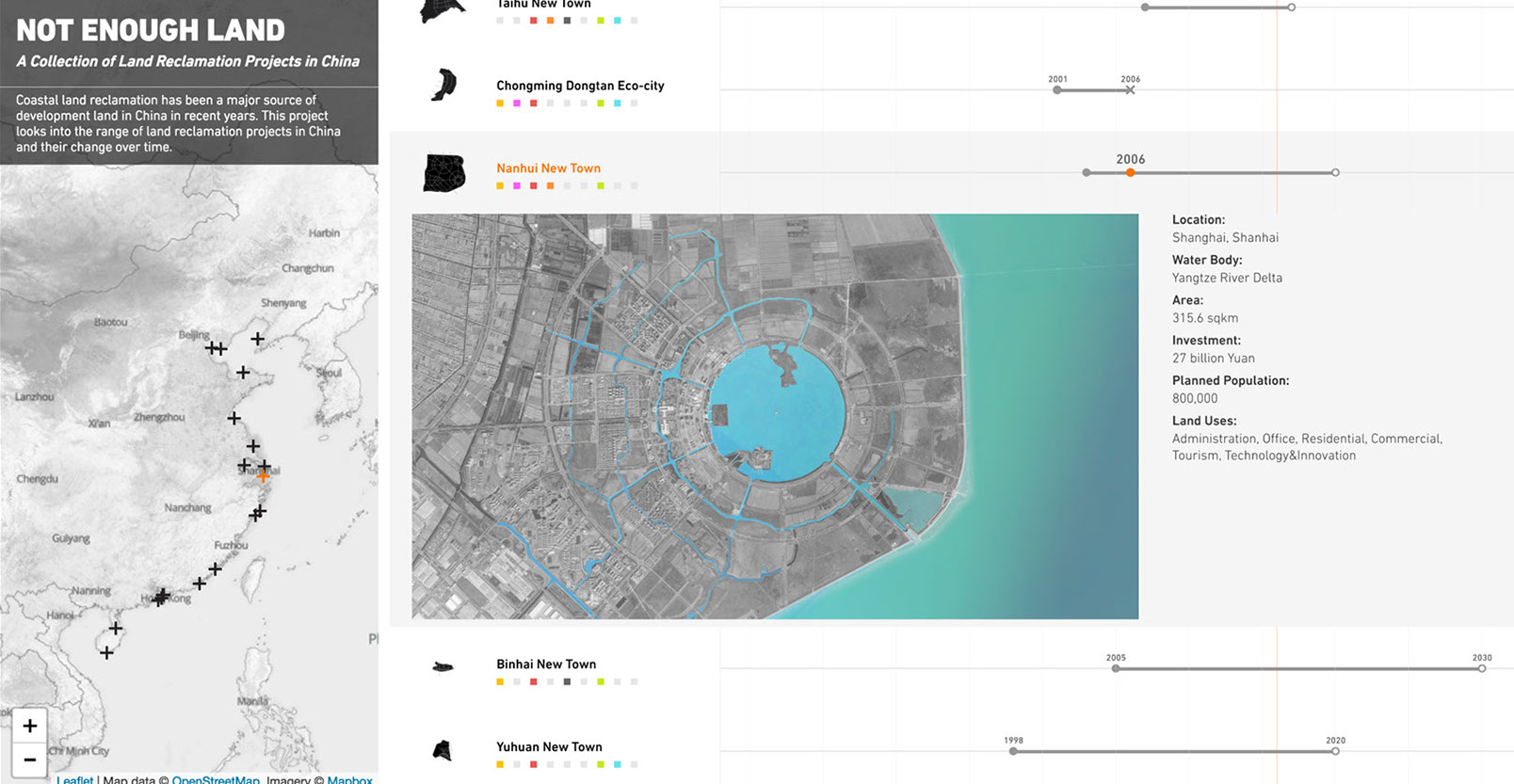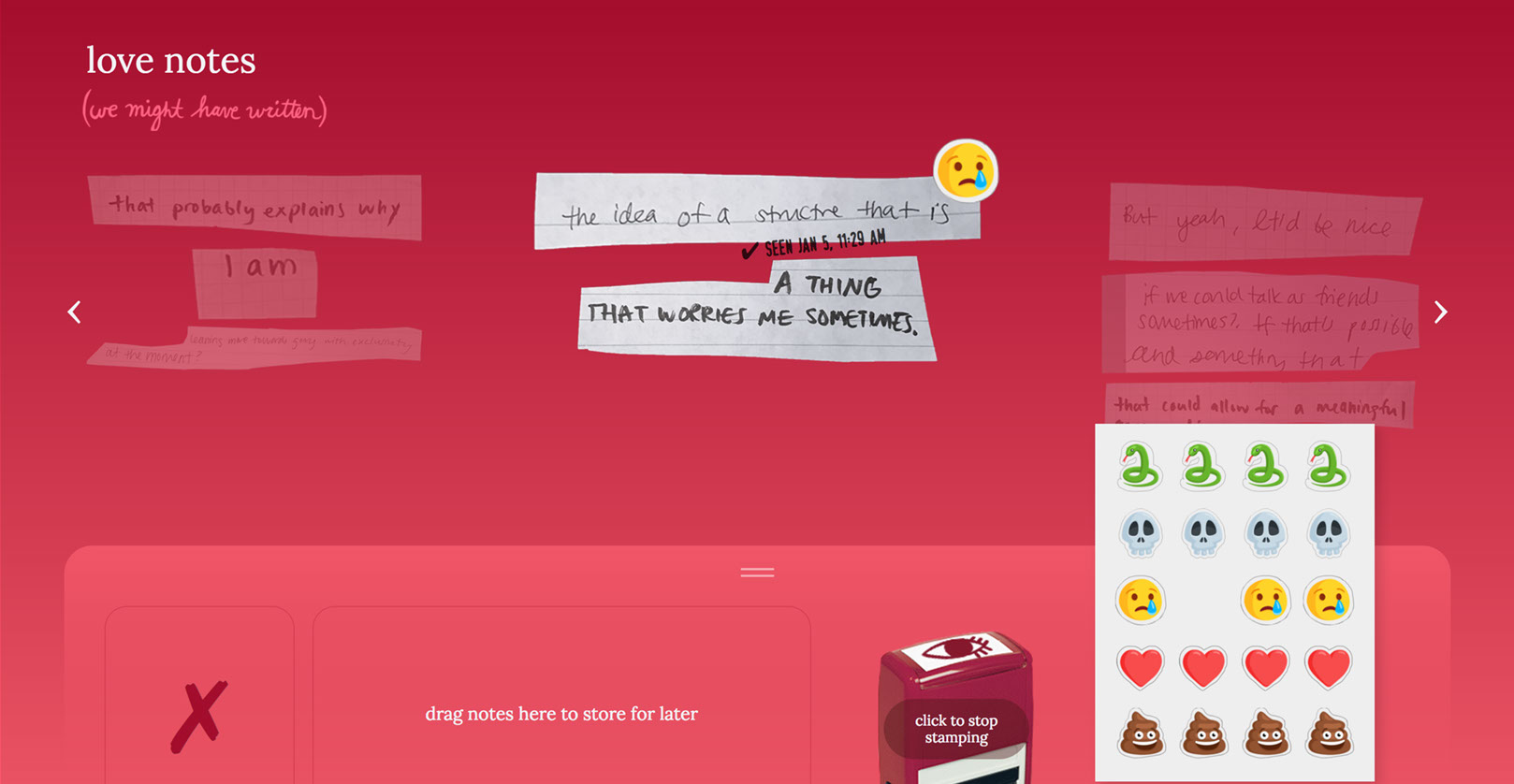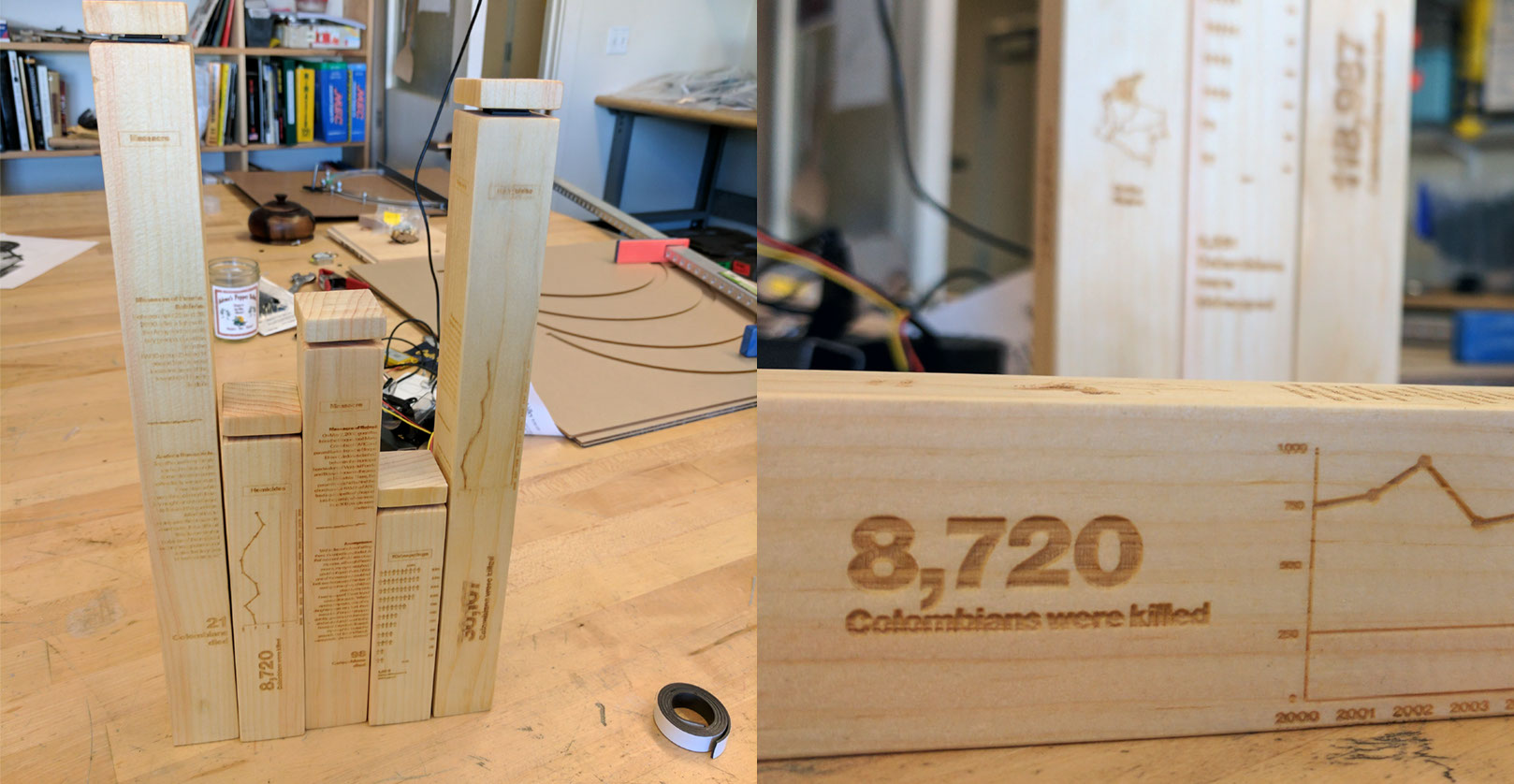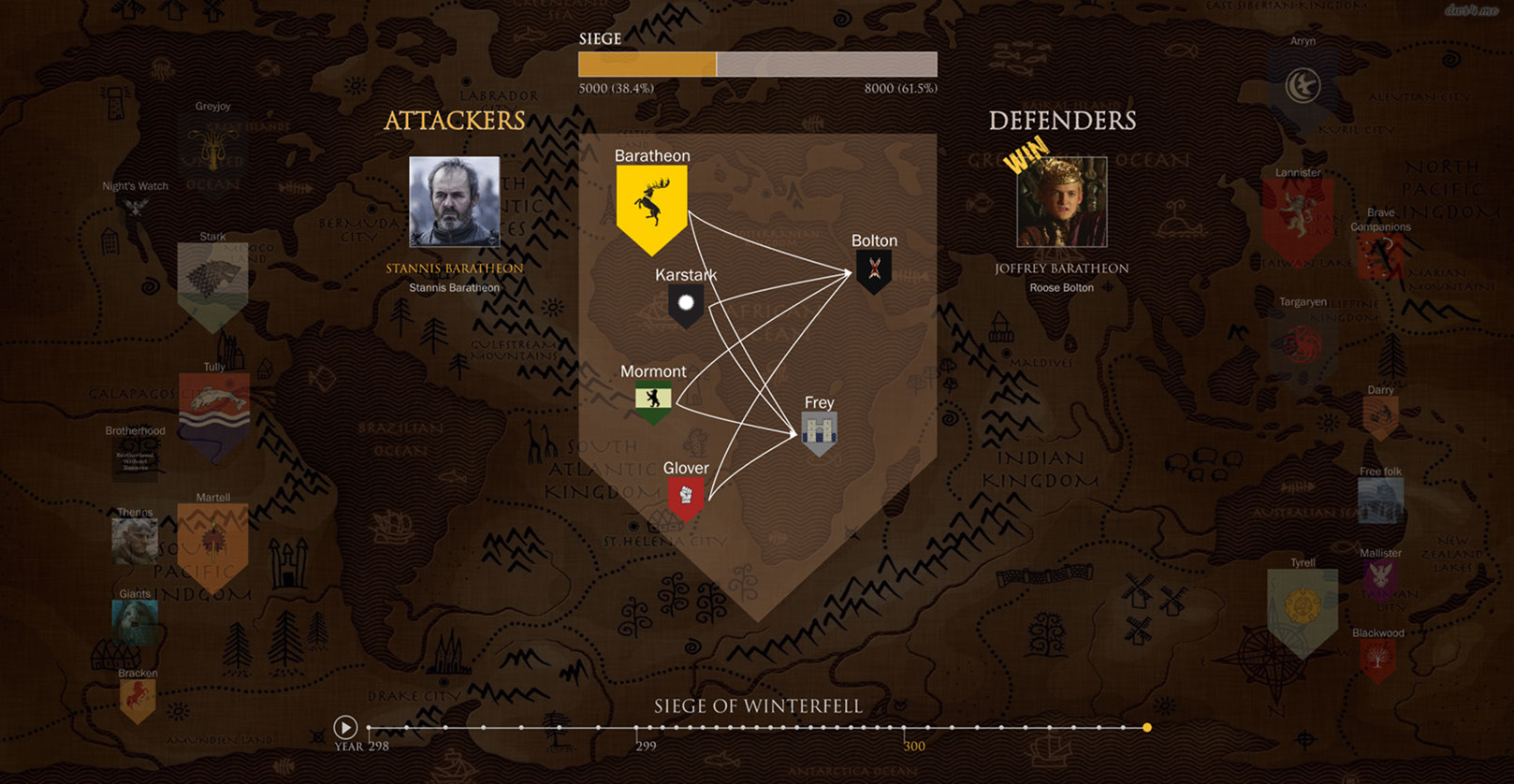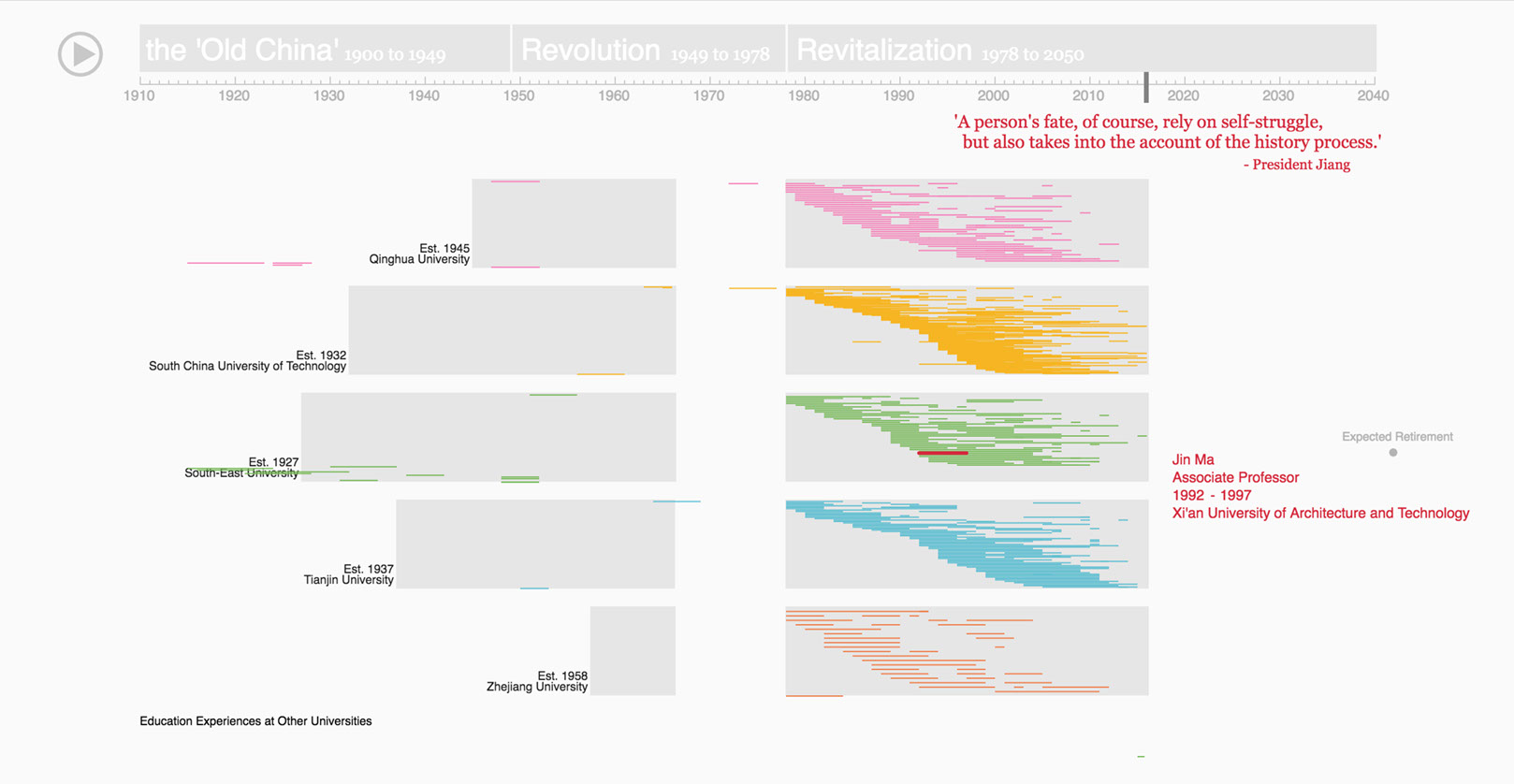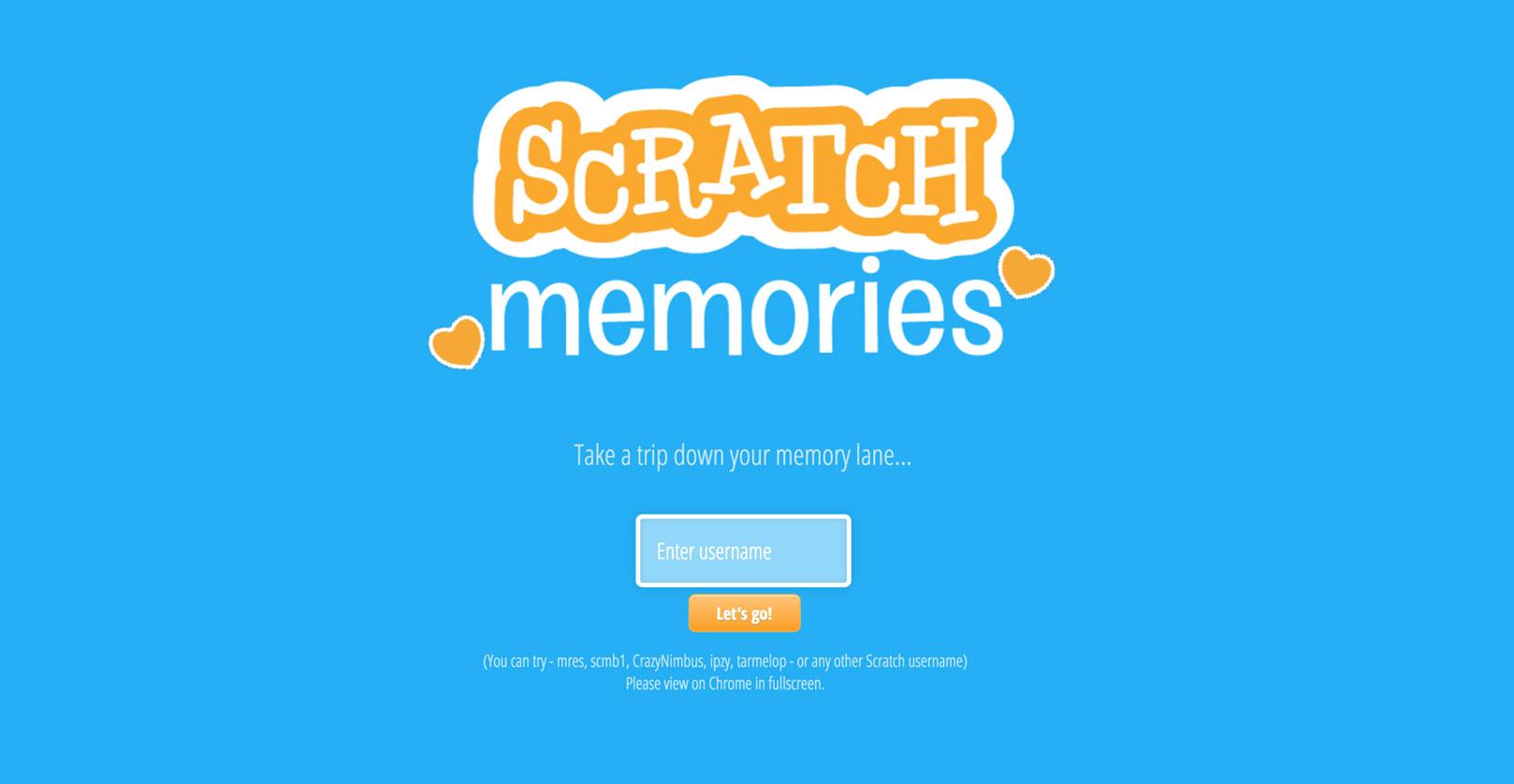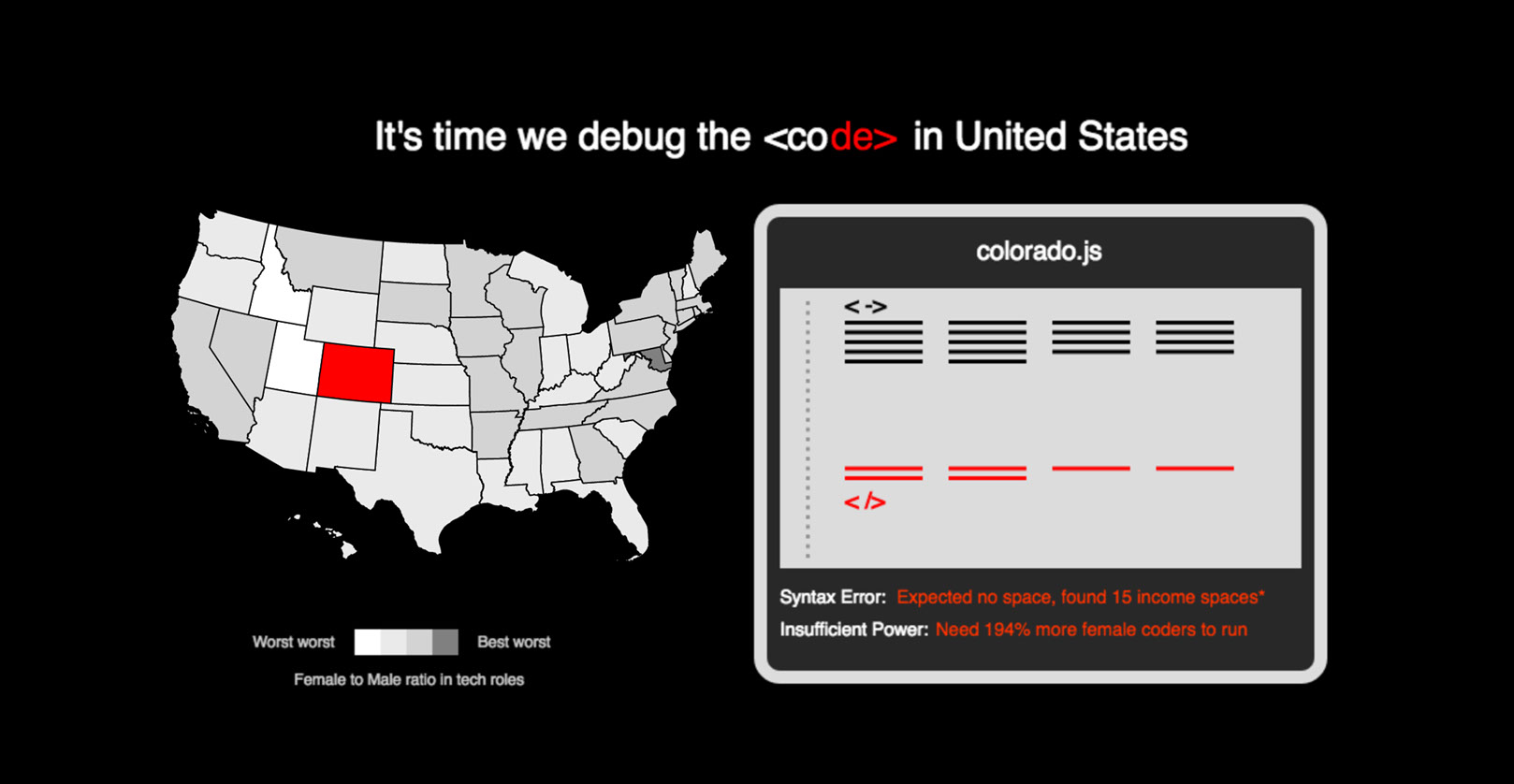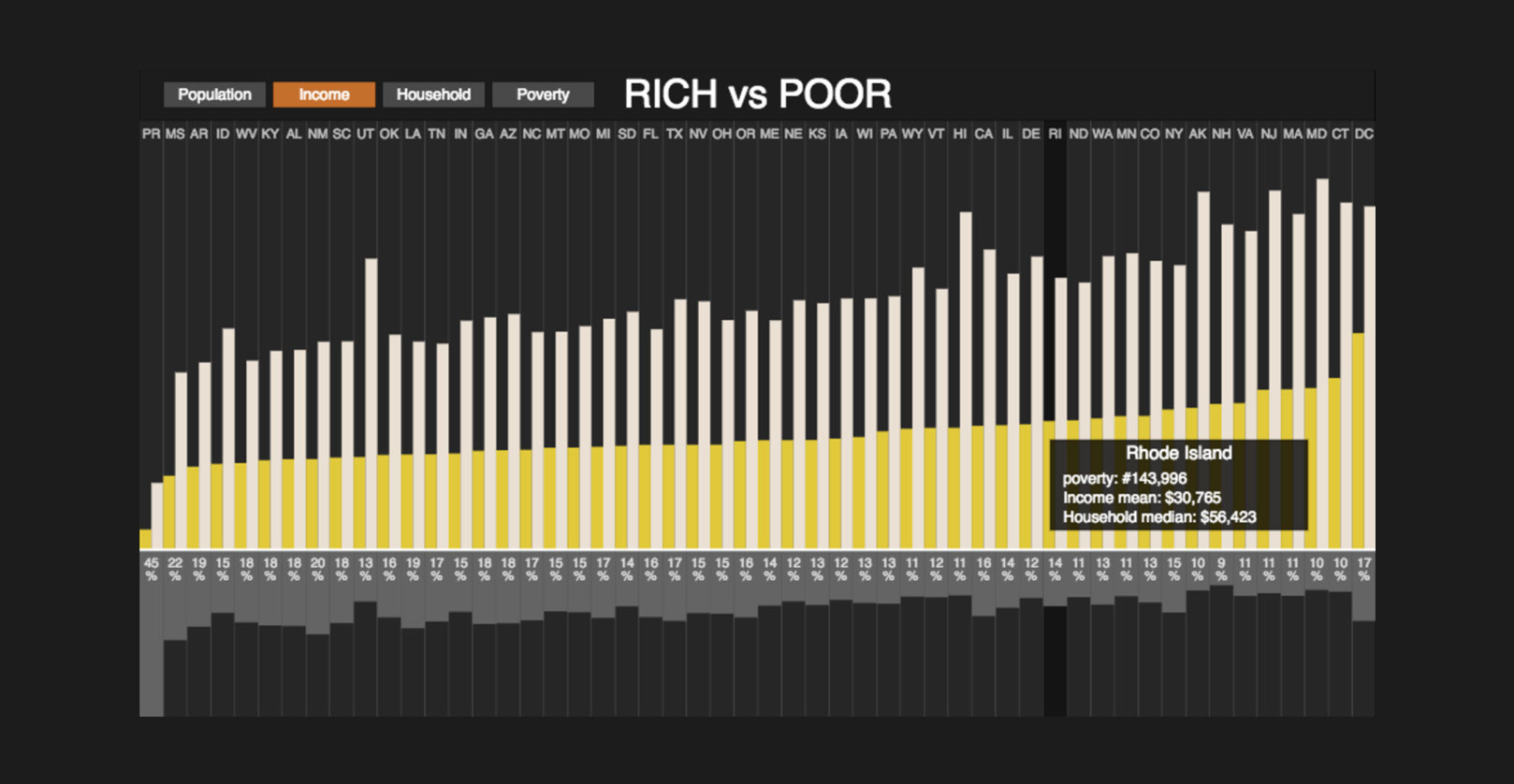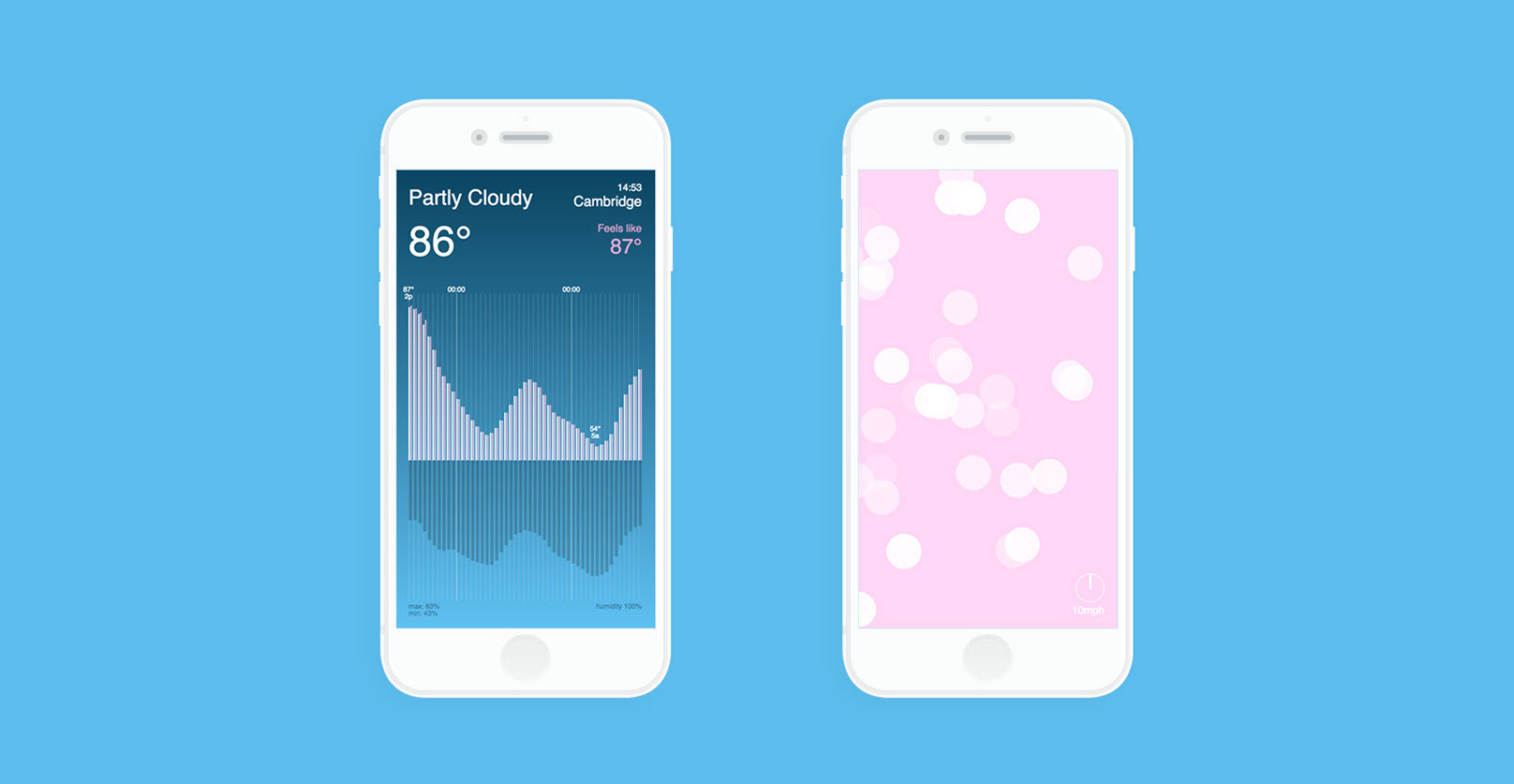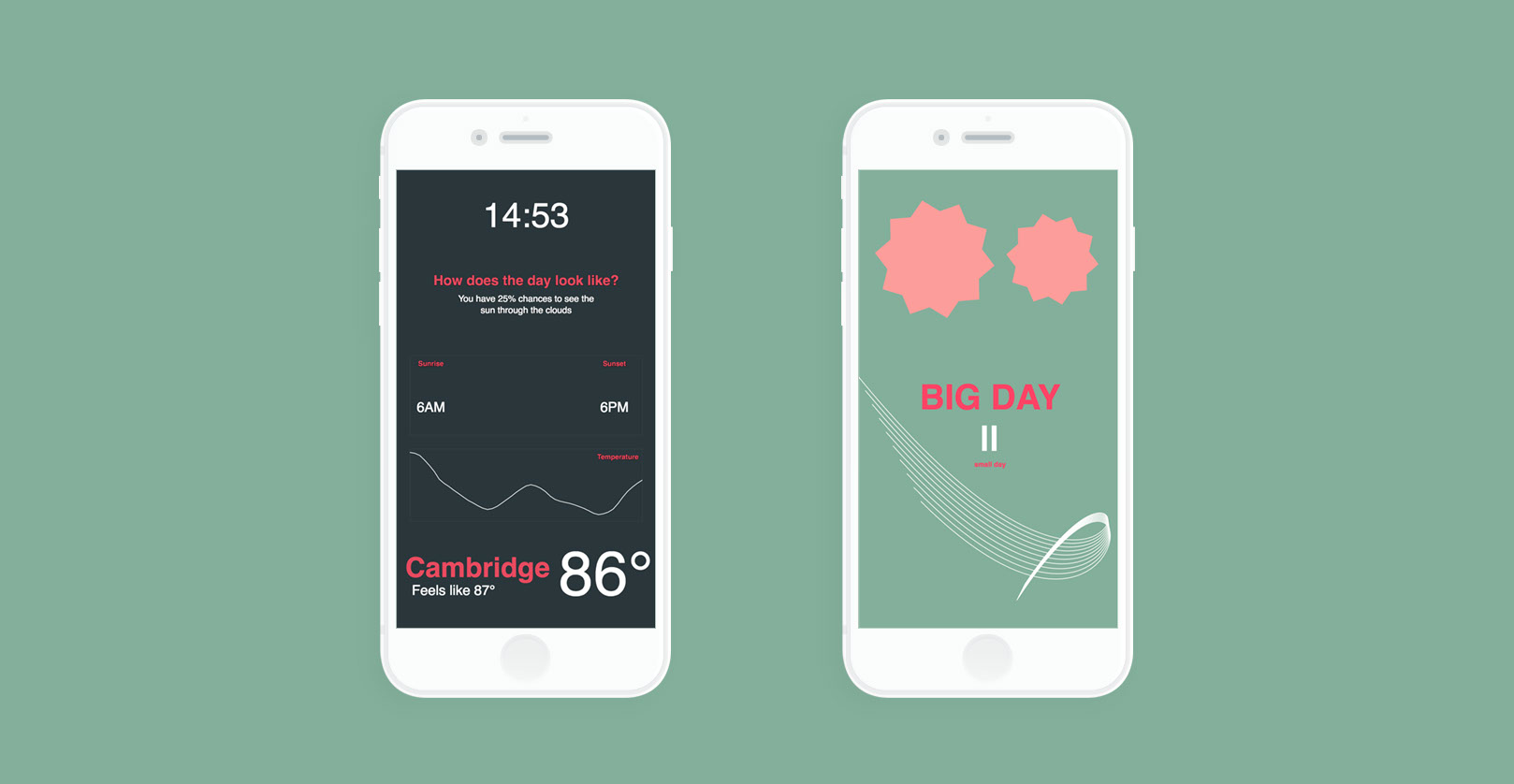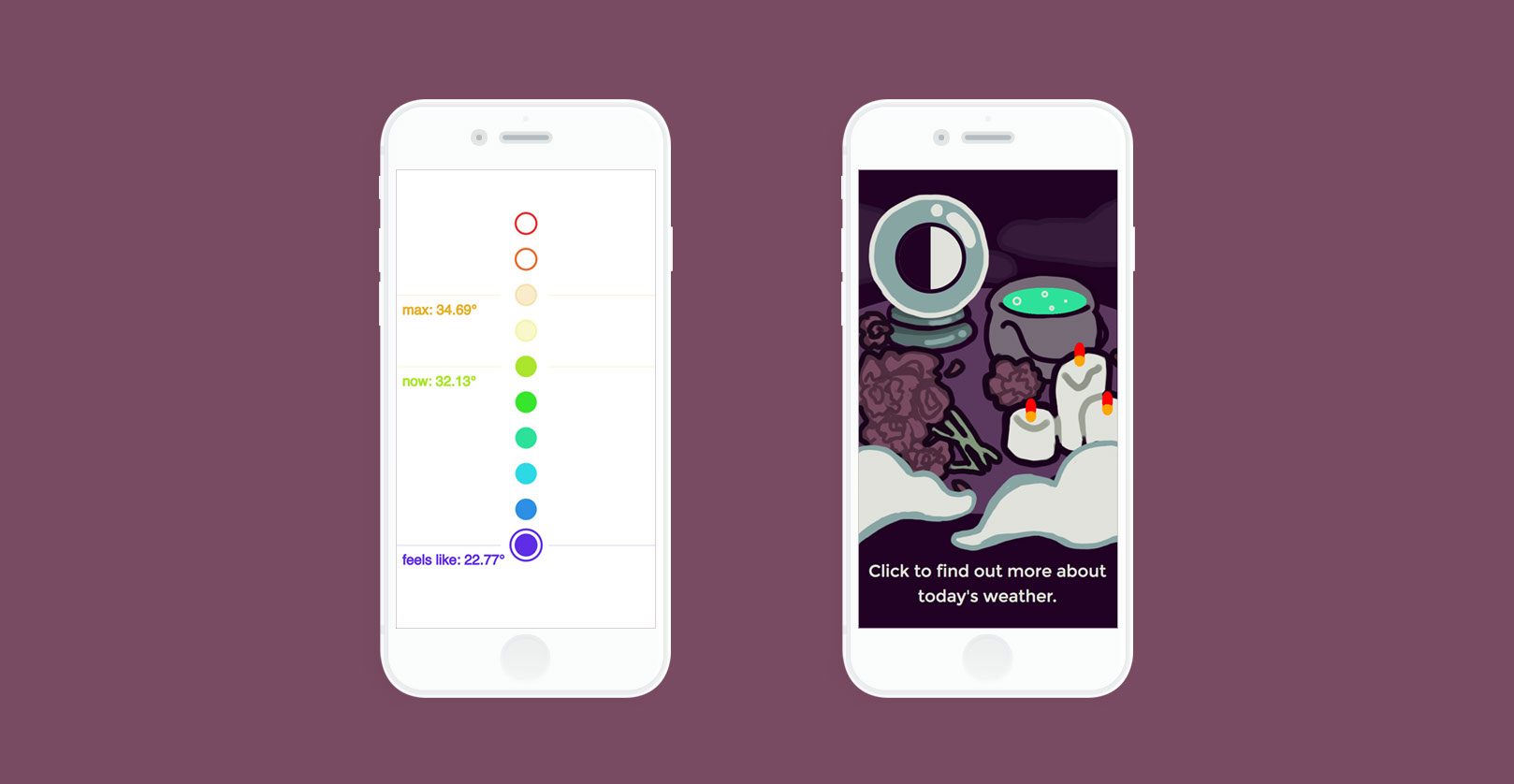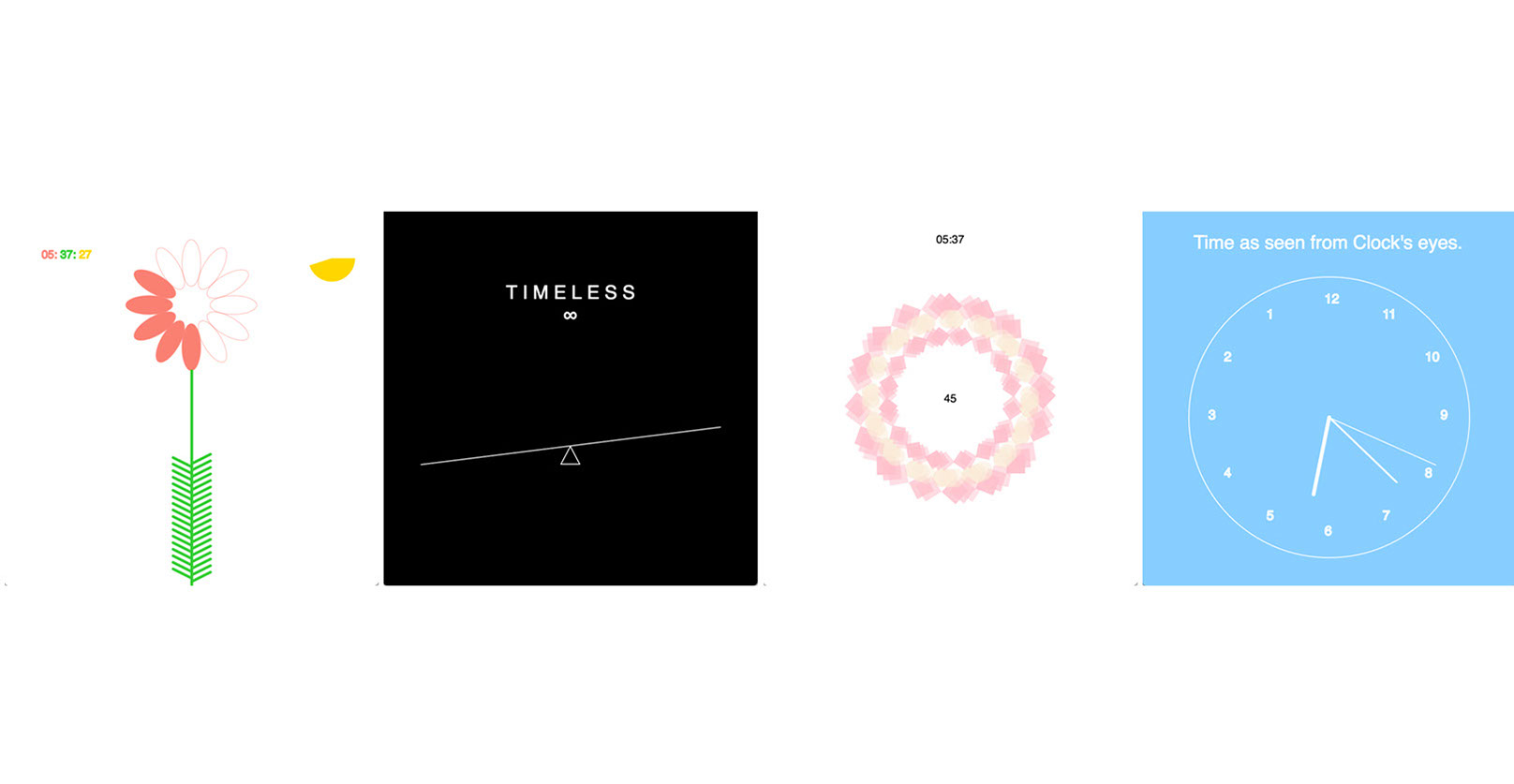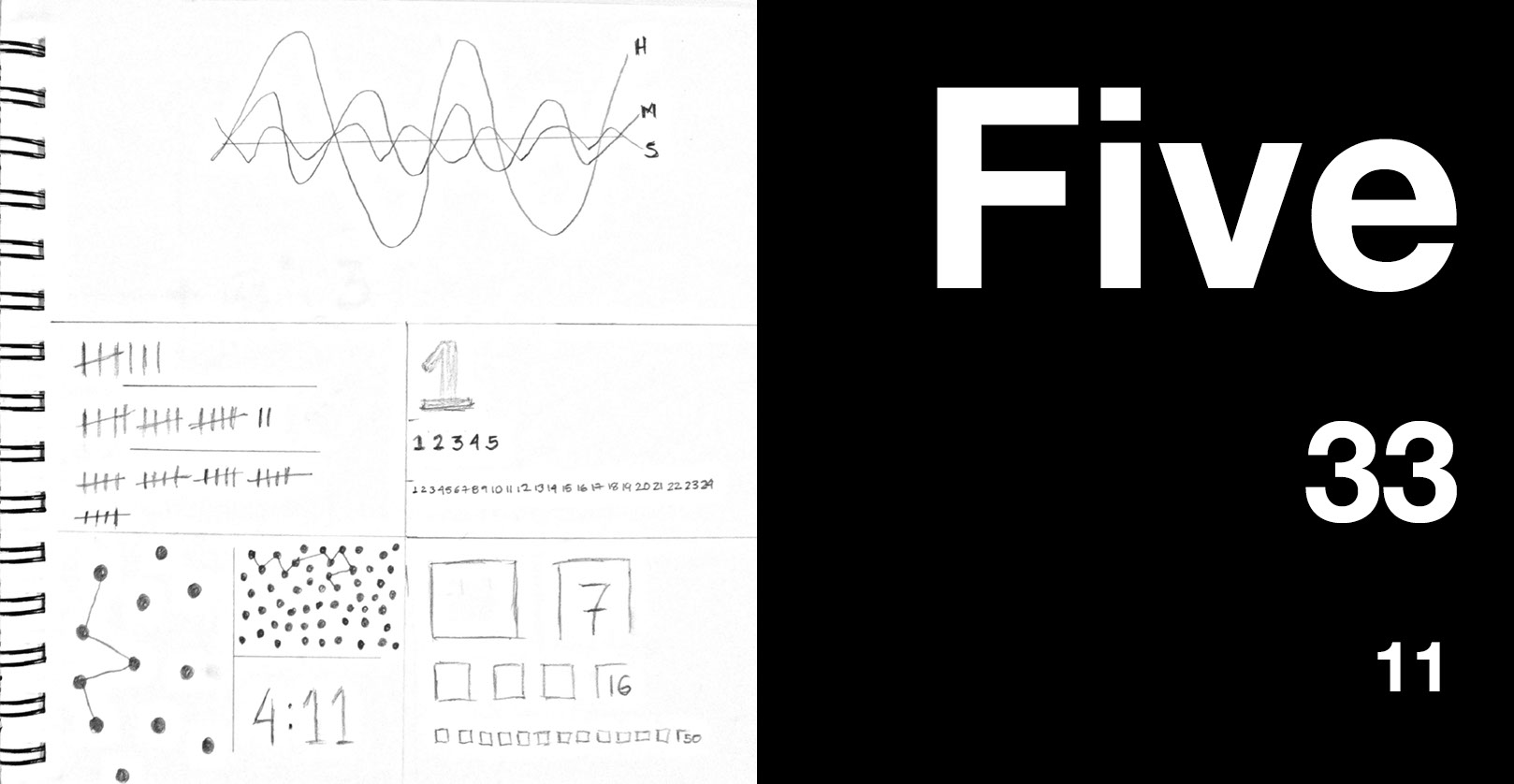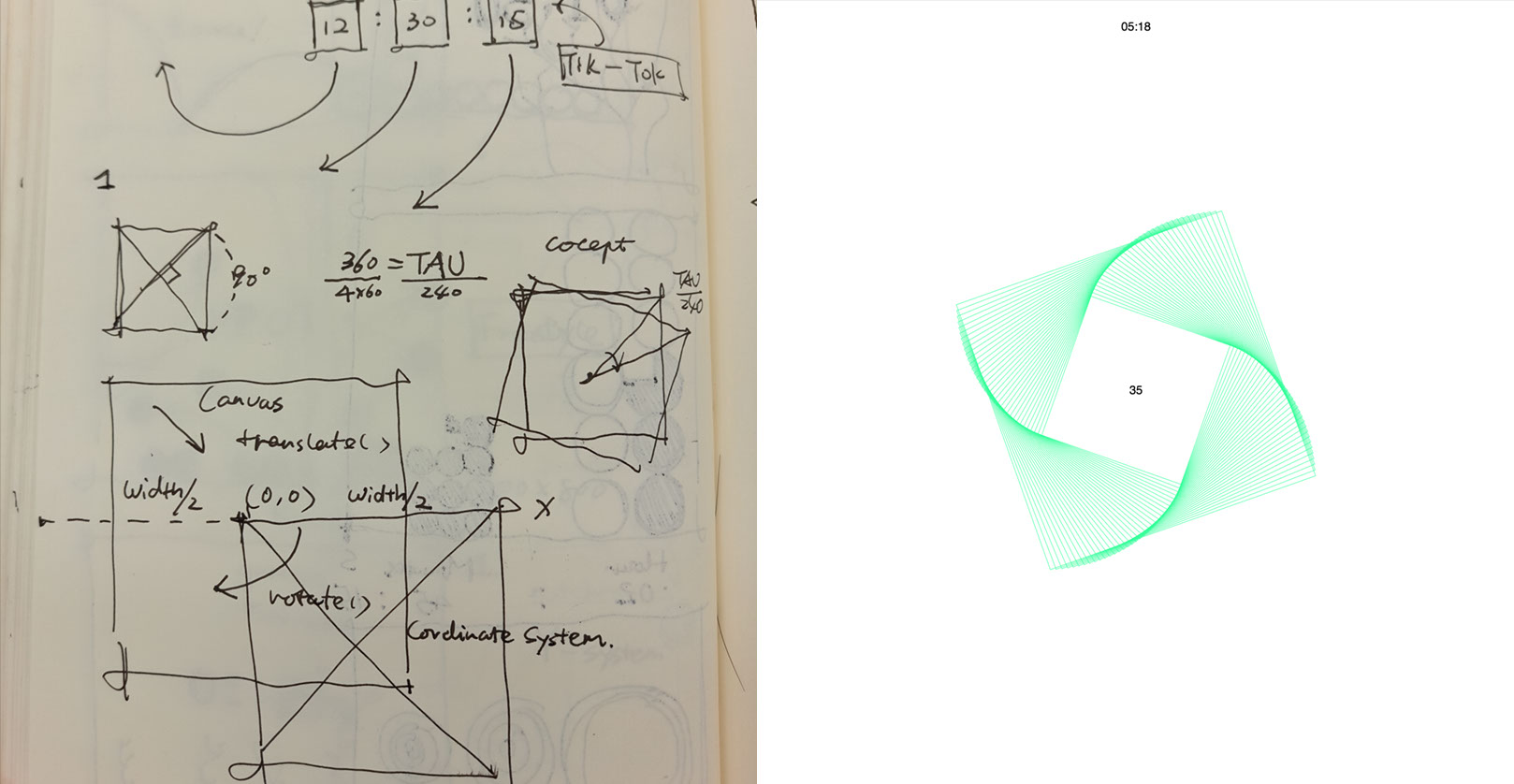Assignment 5: Choose your own adventure
Students worked with a dataset and medium of their choice, tying together all of the concepts they had learned over the course of the semester in a single project. They spent two weeks exploring candidate datasets, working out the technical logistics of ingesting and parsing their data, pinning down details about their intended audience, and identifying the story they wanted to tell. The second two weeks were dedicated to creating an initial visual representation of the data. After a round of design critiques, students gained suggestions for improving and refining their representations for their final presentations. In the final couple of weeks, they focused on advanced design concepts such as animation, interactivity, color, and typography.
Assignment 4: Census
The class was asked to visualize US Census data from CitySDK. Students had the freedom to choose any subset of the data, and represent it any way they wanted. The open-ended nature of the assignment meant that the students bore the responsibility of finding their own “story in the data,” which was one of the core tenets of the curriculum. Ultimately, many of the projects were reflections of the students themselves, shedding light on topics such as immigration, poverty, transportation and commuting, and gender breakdowns in employment.
Assignment 3: Weather
Students created both an abstract and a literal representation of the weather. Building on skills and concepts from the clock face project, this assignment introduced more advanced programming and design principles. The weather project required that all representations were optimized for viewing on a mobile device, introducing the idea of “context of use” in a form that the students were familiar with. They used data from the forecast.io API, which offered the opportunity to learn the basics of HTTP requests and JSON file formats, and to use up-to-the-minute forecast data for accurate and fully functional mobile weather applications.
Assignment 2: Clocks
During the first project, students designed and developed a dozen different clock faces. Many were programming for the first time, while others were just beginning to familiarize themselves with the formal process of design iteration and critique. It was incredible to see how much this seemingly straightforward assignment showcased the diversity of the class. In addition to the archetypal digital and analog clock faces, some designs were abstract, some told a story, some were targeted to a specific audience, and some were playful and interactive. After this two-week introduction to the information design process, everyone was on more even ground and ready to dive into the next segment of the course.
